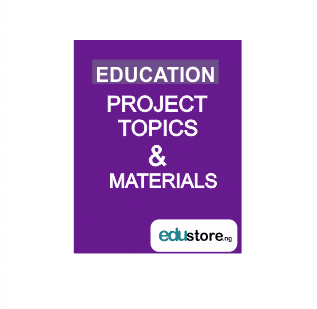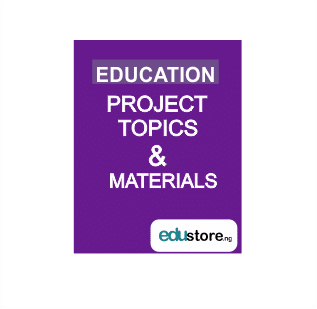ABSTRACT
This study was aimed at assessing the iron, zinc and anthropometric indices of pre-school
children aged 2 – 5 years in Ozubulu. A total of two hundred and forty (240) preschool
children were randomly selected. Questionnaire, anthropometric measurements, biochemical
analysis and 3–day weighed food intake were used for data collection. Two hundred and forty
(240) questionnaires were distributed to mothers and caregivers of the selected children. Out
of the 240 samples, sub samples of thirty children were randomly selected for biochemical
assessment of iron and zinc status and for 3-day weighed food intake analysis. Iron status was
assessed in terms of transferrinemia (serum iron, total iron binding capacity and percentage
transferrin saturation) while zinc status was assessed using serum zinc. WHO child growth
standard and NCHS reference were used as standards. The result showed that prevalence of
underweight and wasting for children 2 – 5 years was 1.7% and 11.8%, respectively using
WHO standard.
The overall prevalence of underweight and wasting was 3.3% and 10%,
respectively by NCHS reference. Stunting affected only 0.8% using WHO Standard while
none was stunted by NCHS reference. Sixty-seven percent (67%) of the pre-school children
had low transferrinemia level (percentage transferring saturation <15%). Serum zinc result
showed that 36.7% and 63.3% of the children had normal (>65μg/dl) and deficient (<65
μg/dl) zinc status respectively. The children took ≥143.3% and ≥ 155.5% of their FAO/WHO
iron and zinc requirement values, respectively. Their zinc intakes was high but were mainly
from plant staples. Intensified nutrition education, improved food processing and handling
techniques and diversification of diet would drastically reduce malnutrition.
- For Reference Only: Materials are for research, citation, and idea generation purposes and not for submission as your original final year project work.
- Avoid Plagiarism: Do not copy or submit this content as your own project. Doing so may result in academic consequences.
- Use as a Framework: This complete project research material should guide the development of your own final year project work.
- Academic Access: This platform is designed to reduce the stress of visiting school libraries by providing easy access to research materials.
- Institutional Support: Tertiary institutions encourage the review of previous academic works such as journals and theses.
- Open Education: The site is maintained through paid subscriptions to continue offering open access educational resources.





